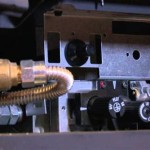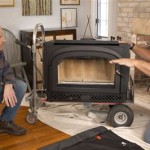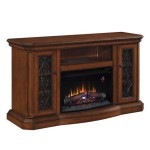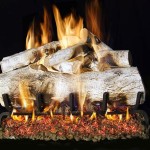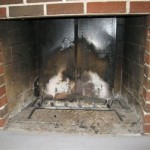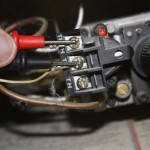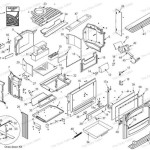Do Electric Fireplaces Save Money On Your Heating Bill?
The question of whether electric fireplaces contribute to saving money on heating bills is a complex one, requiring a detailed analysis of their energy consumption, heating efficiency, and usage patterns compared to alternative heating methods. Electric fireplaces, with their aesthetic appeal and ease of installation, have become increasingly popular as supplemental heating sources. However, their cost-effectiveness is contingent on several factors that must be carefully considered.
Electric fireplaces typically operate by converting electrical energy into heat, primarily through resistance heating. A heating element warms the air, and a fan then circulates the heated air into the surrounding room. Unlike gas or wood-burning fireplaces, electric models do not require venting, making them easier and more affordable to install. This lack of venting also means that all the heat generated remains within the room, contributing to their heating efficiency.
Examining the energy consumption of electric fireplaces is crucial in determining their potential cost savings. Most electric fireplaces are rated between 1,000 and 1,500 watts. This wattage directly translates to the amount of electricity consumed per hour of operation. To calculate the cost, one must consider the local electricity rate, typically measured in cents per kilowatt-hour (kWh). For example, if an electric fireplace uses 1,500 watts (1.5 kW) and the electricity rate is $0.15 per kWh, the fireplace will cost $0.225 per hour to operate. Over several hours of use, these costs can accumulate, necessitating a careful comparison with alternative heating methods.
One of the primary ways electric fireplaces can potentially save money is by providing zone heating. Zone heating involves heating only the occupied areas of a house, rather than heating the entire home. This approach can be more efficient than relying on a central heating system, especially in larger homes where only one or two rooms are frequently used. By using an electric fireplace to heat a specific room, homeowners can lower the thermostat setting for the central heating system, thereby reducing overall energy consumption and heating costs.
The efficiency of an electric fireplace is another critical factor. Electric fireplaces are generally considered to be highly efficient, with nearly 100% of the electrical energy being converted into heat. This contrasts with other heating methods, such as gas furnaces or wood-burning fireplaces, which can lose heat through venting or incomplete combustion. However, despite their high efficiency, the cost-effectiveness of electric fireplaces still depends on the price of electricity compared to the price of other fuels like natural gas or propane.
The initial cost of an electric fireplace is typically lower than that of gas or wood-burning fireplaces. This lower initial investment can be attractive to homeowners looking for an affordable heating solution. However, it’s important to consider the long-term operating costs, which can vary depending on electricity rates and usage patterns. A thorough cost analysis, including both the initial investment and the ongoing operating expenses, is essential for determining whether an electric fireplace is a cost-effective choice.
The thermostat settings and usage habits of the homeowner also have a significant impact on the cost savings associated with electric fireplaces. If an electric fireplace is used excessively or to heat an entire home, it is unlikely to result in significant cost savings. Conversely, if it is used judiciously as a supplemental heating source in a specific room, it can contribute to reduced energy consumption and lower heating bills.
Different types of electric fireplaces exist, each with varying features and energy efficiency. Some models include features like adjustable thermostats, timers, and remote controls, which can help to optimize energy usage. Other models may incorporate LED lighting to create a realistic flame effect, which consumes very little energy. Selecting an electric fireplace with energy-saving features can further enhance its cost-effectiveness.
Comparing the running costs of an electric fireplace to those of a central heating system requires careful consideration. Central heating systems, whether powered by natural gas, oil, or electricity, are designed to heat an entire home. While they may be more efficient than electric fireplaces in certain situations, they can also be less efficient when only a small area needs to be heated. In these cases, using an electric fireplace for zone heating can be a more cost-effective solution.
The insulation of a home plays a crucial role in determining the effectiveness of any heating system, including electric fireplaces. A well-insulated home will retain heat more effectively, reducing the amount of energy needed to maintain a comfortable temperature. In a poorly insulated home, heat can escape quickly, requiring the electric fireplace to work harder and consume more energy, thereby diminishing potential cost savings.
Understanding Kilowatt-Hour (kWh) Consumption
A kilowatt-hour (kWh) is the standard unit used to measure electrical energy consumption. It represents the amount of energy required to operate a 1,000-watt appliance for one hour. Understanding kWh consumption is essential for calculating the operating costs of an electric fireplace. As mentioned earlier, an electric fireplace rated at 1,500 watts consumes 1.5 kWh per hour. To determine the cost, multiply the kWh consumption by the local electricity rate. This calculation provides a clear estimate of the hourly operating cost of the electric fireplace.
Furthermore, it's important to differentiate between the heating capacity and the electricity consumption. An electric fireplace with a higher wattage might provide more heat, but it will also consume more electricity. Conversely, a lower wattage model may consume less electricity but might not provide sufficient heat for a larger room. Therefore, selecting the appropriate wattage for the size of the room is crucial for optimizing energy efficiency.
Comparing the kWh consumption of an electric fireplace with other appliances can help to put its energy usage into perspective. For example, a typical window air conditioner might consume a similar amount of electricity as an electric fireplace. However, the air conditioner is used to cool a room, while the electric fireplace is used to heat it. Understanding these relative energy usages can inform decisions about which appliances to use and when, to minimize overall energy consumption.
Comparing Electric Fireplaces to Central Heating Systems
Central heating systems, such as furnaces and heat pumps, are designed to heat an entire home or a large portion of it. They typically operate on natural gas, oil, propane, or electricity. The efficiency of a central heating system is measured by its Annual Fuel Utilization Efficiency (AFUE) rating for furnaces or its Heating Season Performance Factor (HSPF) rating for heat pumps. These ratings indicate the percentage of fuel or electricity that is converted into usable heat.
Central heating systems are generally more efficient for heating an entire home, especially during periods of extreme cold. However, they can be less efficient when only a small area needs to be heated. In these cases, using an electric fireplace for zone heating can be a more cost-effective solution. By heating only the occupied areas of the house, homeowners can avoid wasting energy on heating unoccupied rooms.
The choice between an electric fireplace and a central heating system depends on several factors, including the size of the home, the number of occupied rooms, and the local energy costs. In a small apartment or a well-insulated home, an electric fireplace might be sufficient to provide supplemental heating. In a larger home with multiple rooms, a central heating system is likely to be more efficient for providing overall warmth. A combined approach, using the central heating system for general warmth and the electric fireplace for zone heating, can often be the most cost-effective solution.
Optimizing Electric Fireplace Usage for Cost Savings
Several strategies can be employed to optimize the usage of electric fireplaces and maximize potential cost savings. One of the most effective strategies is to use the electric fireplace for zone heating, focusing on heating only the occupied areas of the home. This can be achieved by closing doors to unused rooms and adjusting the thermostat on the central heating system to a lower setting.
Another strategy is to use the thermostat and timer settings on the electric fireplace to control its operation. Setting the thermostat to a comfortable temperature and using the timer to turn off the fireplace automatically can prevent it from running unnecessarily. This can significantly reduce energy consumption and lower heating costs.
Regular maintenance of the electric fireplace can also contribute to its efficiency. Cleaning the heating element and fan can ensure that the fireplace operates smoothly and efficiently. Additionally, inspecting the power cord and connections can prevent electrical problems that could lead to energy waste or safety hazards. Ensuring adequate ventilation around the fireplace can also improve its heating performance.
Choosing an electric fireplace with energy-efficient features, such as LED lighting and adjustable heat settings, can further enhance its cost-effectiveness. LED lighting consumes very little energy compared to traditional incandescent bulbs, while adjustable heat settings allow homeowners to customize the heat output to match their needs. Some models also include features like automatic shut-off and remote control, which can further optimize energy usage.
Finally, addressing any drafts or insulation issues in the home can significantly improve the efficiency of any heating system, including electric fireplaces. Sealing windows and doors, adding insulation to walls and attics, and repairing any gaps or cracks in the building envelope can help to retain heat and reduce the amount of energy needed to maintain a comfortable temperature. This can lead to significant cost savings over time.

How To Save Money On Heating With Electric Fireplaces Twin Star Home

Does An Electric Fireplace Save Money

Can My Fireplace Save Money On Electric Bill Barineau Heating Air

ᑕ❶ᑐ How Much Does It Cost To Run An Electric Fireplace

How Much Does It Cost To Run Electric Fireplace In 2025

Do Electric Fireplaces Run Up Bill Greenlight Heating

ᑕ❶ᑐ Electric Fireplace Cost Ysis Magikflame

Can A Fireplace Save You Money On Your Electric Bills

ᑕ❶ᑐ How Much Does It Cost To Run An Electric Fireplace

Can Using A Fireplace Save You Money On Heating Bills Wm Buffington Company
Related Posts

